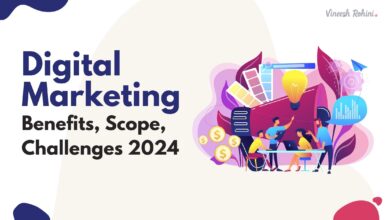Google Gemini – Everything We Know So Far – Comprehensive Guide 2023 -24
Google Gemini
Google AI has unveiled its latest marvel – Gemini, a pinnacle achievement in the realm of artificial intelligence (AI). Representing a leap forward in AI capabilities, Gemini stands as a next-generation model, boasting a myriad of impressive functionalities that redefine the boundaries of what AI can achieve.
Google Gemini is a next-generation ?
Sophisticated Multimodal Capabilities:
At the core of Gemini’s prowess lies its sophisticated multimodal capabilities. This next-gen AI is adept at understanding and processing information from diverse modalities, including text, images, and code. This unique feature empowers Gemini to excel in tasks such as image captioning, video summarization, and even code generation, marking a significant stride towards a more versatile and adaptable AI.
Mastering Human-Style Conversations:
Google Gemini sets a new standard in human-AI interactions by mastering human-style conversations. It navigates the nuances of human language with finesse, engaging in natural and captivating conversations that are both informative and enjoyable. This breakthrough in conversational AI brings us closer to AI systems that seamlessly integrate into our daily lives.
Language and Content Mastery:
Google Gemini showcases unparalleled language and content mastery, demonstrating its ability to generate creative text formats ranging from poems and code to scripts, musical pieces, emails, and letters. Furthermore, Gemini exhibits a remarkable proficiency in language translation, seamlessly bridging communication gaps with high accuracy.
Understanding and Interpreting Images:
Gemini’s prowess extends to the visual realm, as it demonstrates an exceptional capability to understand and interpret images. This includes tasks like object detection, image segmentation, and image classification, positioning Gemini as a versatile solution for applications in computer vision.
Prolific and Effective Coding:
The AI landscape witnesses a transformative moment with Gemini’s proficiency in generating functional and efficient code. Not only can Gemini create code, but it also possesses the ability to comprehend and debug existing code. This capability holds immense promise for developers and businesses seeking to streamline and enhance their coding processes.
Data and Analytics Mastery:
Google Gemini emerges as a powerful tool for data analysis, capable of delving into vast datasets and extracting valuable insights. Its applications in diverse industries, from healthcare to finance, are limitless, providing businesses with a strategic advantage in harnessing the potential of big data.

Availability
Google Gemini is currently not available for public use, but Google plans to roll it out to enterprise and developers in the future. The company believes that Gemini has the potential to revolutionize the way we interact with computers and the world around us.
Here are some additional details about Google Gemini AI:
- It is based on Google’s PaLM architecture, which was previously the company’s most powerful AI model.
- It is trained on a massive dataset of text and code, which allows it to learn a wide range of skills and knowledge.
- It is powered by Google’s next-generation Tensor Processing Unit (TPU), which is specifically designed for AI workloads.
Here are some potential applications of Google Gemini AI:
- Developing new AI-powered applications: Gemini could be used to develop a wide range of AI-powered applications, such as virtual assistants, chatbots, and personal assistants.
- Improving existing AI applications: Gemini could be used to improve the performance of existing AI applications, such as image recognition and machine translation.
- Automating tasks: Gemini could be used to automate a wide range of tasks, such as data entry, customer service, and content creation.
- Personalizing experiences: Gemini could be used to personalize experiences for users, such as recommending products or providing personalized news feeds.
Google Gemini upcoming features
While Google hasn’t officially announced a timeline for upcoming features in Gemini, several potential developments are generating excitement:
Expanding Multimodal Capabilities:
- Support for audio and video input and output, enabling real-time translation and summarization of conversations and events.
- Integration with various devices and platforms, allowing users to interact with Gemini through voice commands and gestures.
- Enhanced image and video understanding, enabling tasks like object manipulation and scene generation.
Advanced Language Processing:
- Ability to understand complex reasoning and argumentation, leading to more informed and nuanced responses.
- Improved ability to generate different creative text formats, including poetry, scripts, and musical pieces.
- Development of specialized models for specific tasks, such as legal research or medical diagnosis.
Accessibility and Integration:
- Integration with Google products and services beyond Bard and Pixel phones, including Search, Assistant, and Chrome.
- Development of user-friendly interfaces for non-technical users to access and utilize Gemini’s capabilities.
- Open-sourcing of parts of Gemini’s codebase to foster innovation and collaboration in the AI community.
Additional Features:
- Enhanced code generation capabilities, including the ability to generate code for specific platforms and frameworks.
- Development of tools for collaborative AI development, allowing multiple users to work together on AI projects.
- Integration with other AI models and tools, creating an ecosystem of AI-powered solutions for various tasks.
It’s important to note that these are just speculations and expectations based on current information and trends. The actual future of Gemini depends on Google’s research and development efforts and the evolving landscape of AI technology.

Better than ChatGPT 4?
Comparing Google Gemini and ChatGPT 4 boils down to their strengths and weaknesses in various areas. Ultimately, the “better” model depends on your specific needs and priorities.
Here’s a breakdown of their key aspects to help you decide:
1. Performance:
- Gemini:
- Claims to outperform ChatGPT 4 on over 30 out of 32 academic benchmarks across text, reasoning, image, and video understanding, and speech recognition.
- Exhibits sophisticated multimodal reasoning capabilities, excelling in math, physics, and coding.
- Achieves state-of-the-art performance on massive multitask language understanding (MMLU) benchmarks.
- ChatGPT 4:
- Demonstrates improvements over previous versions in problem-solving tasks and reasoning abilities.
- Scores high on standardized tests like the Uniform Bar Exam and Biology Olympiad.
- Offers strong creative text generation capabilities.
2. Modality:
- Gemini:
- Processes and understands information from various modalities, including text, code, audio, images, and videos.
- Optimized for different sizes, ranging from Ultra to Nano models.
- ChatGPT 4:
- Primarily focused on text-based interactions and generation.
- Introduces visual input capabilities but may not be as advanced as Gemini’s multimodal understanding.
3. Safety and Alignment:
- Gemini:
- Incorporates comprehensive safety evaluations, including bias and toxicity analysis.
- Undergoes rigorous testing and collaborates with external experts to minimize risks.
- ChatGPT 4:
- OpenAI emphasizes safety and usefulness as core principles.
- Limited information available regarding specific safety measures compared to Gemini.
4. Availability:
- Gemini:
- Currently not available for public use.
- Planned rollout for enterprise and developers in the future.
- ChatGPT 4:
- Limited access through research partnerships and collaborations.
- Potential for wider accessibility in the future.
Overall:
- Gemini:
- More powerful and versatile, particularly in multimodal tasks and reasoning.
- Emphasizes safety and undergoes rigorous testing.
- Currently not publicly available.
- ChatGPT 4:
- Offers strong text generation abilities and shows progress in reasoning tasks.
- Focuses on safety but details might be less transparent than Gemini.
- Limited access compared to Gemini’s potential future availability.
Therefore:
- If you need a powerful and versatile AI for complex tasks requiring multimodal understanding and reasoning, Gemini might be a better choice once available.
- If your primary focus is text-based interactions and creative writing, ChatGPT 4 might be a suitable option.

Google Gemini and Google Bard Are Same ?
No, Google Gemini and Google Bard are not exactly the same. Although they are closely related, they have distinct features and purposes:
Google Gemini:
- Underlying technology: A large language model (LLM) with advanced capabilities in various areas, including text, code, audio, images, and video.
- Focus: Research and development. Not yet available for public use.
- Strengths: Powerful, versatile, and capable of complex tasks requiring multimodal understanding and reasoning.
- Weaknesses: Not yet publicly accessible, limited information available about its functionalities and potential applications.
Google Bard:
- Underlying technology: Powered by the Gemini Pro model, a specifically tuned version of Gemini for advanced reasoning, planning, and understanding.
- Focus: Publicly available tool for creative writing, brainstorming, summarization, translation, and other tasks.
- Strengths: User-friendly interface, accessible to a wider audience, provides a taste of Gemini’s capabilities.
- Weaknesses: Limited capabilities compared to the full Gemini model, primarily focused on text-based tasks.
Therefore:
- Gemini is the underlying technology, the advanced LLM, while Bard is a specific application built on top of it.
- You can think of Gemini as the engine and Bard as one of the vehicles powered by that engine.
- Gemini has much greater potential for complex tasks and future applications, but Bard provides early access to some of its functionalities in a user-friendly way.
Which programming languages are use to create goole gemini ?
Google hasn’t publicly disclosed all the specific programming languages used to create Gemini. However, based on available information and common industry practices, we can make some educated guesses:
High-Level Languages:
- Python: Likely used for core functionalities due to its popularity in deep learning and AI research.
- C++: Possibly utilized for performance-critical parts of the model and interfacing with hardware.
- Java: Might be employed for specific components like the TensorFlow platform or Android integration.
Low-Level Languages:
- Assembly language: Potentially used for highly optimized sections requiring direct hardware access.
- FPGAs: Could be employed for accelerating specific tasks with custom hardware logic.
Additional Tools and Frameworks:
- TensorFlow: Serving as the primary framework for training and deploying the model.
- JAX: Potentially used for automatic differentiation and other computational tasks.
- NumPy and SciPy: Likely utilized for scientific computing and data manipulation.
Note: This list is not exhaustive and may not include all the languages and tools involved in creating Gemini. The actual development process likely involved a complex combination of languages and technologies adapted to specific needs.
It’s important to remember that Google is constantly innovating and evolving its AI technology. As Gemini continues to develop, the underlying programming languages and tools might also change and adapt to new advancements.

Google Gemini upcoming future ?
Yes, Google Gemini has a bright and promising future. Here are some reasons why:
Strong performance and capabilities: Gemini has demonstrated impressive performance across various benchmarks, outperforming other large language models (LLMs) in tasks like reasoning, problem-solving, and multimodal understanding. This suggests its potential to revolutionize various fields like education, research, and creative industries.
Versatility and adaptability: Gemini’s ability to handle different modalities (text, code, audio, images, and video) makes it adaptable to a wider range of applications compared to LLMs focused solely on text. This opens up doors for innovative solutions in areas like healthcare, robotics, and entertainment.
Focus on safety and alignment: Google emphasizes safety and ethical considerations in developing Gemini. This includes rigorous testing and evaluation to minimize risks of bias, toxicity, and misuse. This focus on responsible AI development is crucial for building trust and ensuring positive societal impact.
Open-source potential: While currently not available for public use, Google might open-source parts of Gemini’s codebase in the future. This would accelerate research and innovation in the broader AI community, leading to the development of new tools and applications built on top of Gemini’s capabilities.
Integration with other AI models and tools: Google Gemini can be integrated with other AI models and tools to create a powerful ecosystem of solutions for various tasks. This allows for specialization and collaboration, enhancing the overall efficiency and effectiveness of AI-powered systems.
Potential for democratization of AI: By making Gemini accessible to more users and developers, Google can contribute to the democratization of AI technology. This could lead to a more inclusive and equitable AI landscape, where everyone has the opportunity to leverage this powerful technology for positive impact.
Constant development and innovation: Google is continuously improving and updating Gemini, with new features and capabilities added over time. This ongoing commitment ensures that Gemini remains at the forefront of AI technology and continues to push the boundaries of what is possible.
Overall, Google Gemini has a future full of potential to transform how we interact with technology and the world around us. Its impressive capabilities, strong ethical considerations, and potential for wide adoption make it a key player in shaping the future of AI.
Here are some potential areas where Google Gemini could have a significant impact:
- Education: Personalized learning experiences, intelligent tutors, and automated content creation.
- Research and development: Scientific discovery, drug development, and materials science.
- Creative industries: Scriptwriting, music composition, and graphic design.
- Healthcare: Medical diagnosis, treatment recommendations, and personalized patient care.
- Customer service: Intelligent chatbots, virtual assistants, and automated support systems.
- Robotics: Natural language interaction with robots and intelligent automation.
Also Read…… Best AI Tool For Any Task – Website Building Tool
Exploring the Pinnacle of AI Tools: ChatGPT and Google BARD
ChatGPT:
ChatGPT, developed by OpenAI, has gained significant recognition for its exceptional natural language processing capabilities. As a state-of-the-art language model based on the GPT-3 architecture, ChatGPT exhibits an impressive aptitude for generating human-like text responses. With its vast pre-training on diverse datasets, ChatGPT can engage in meaningful conversations and provide contextually relevant information to users.
A. Language Generation:
ChatGPT’s ability to generate coherent and contextually appropriate responses sets it apart from earlier iterations. Its advanced language generation capabilities allow it to understand prompts and provide accurate answers. Users can leverage ChatGPT to create conversational agents, virtual assistants, and interactive chatbots, enhancing the overall user experience.
B. Creative Writing:
Beyond its practical applications, ChatGPT has showcased its prowess in creative writing. It can compose engaging stories, generate poetry, and mimic the writing style of various authors. This functionality expands the possibilities of content creation, offering inspiration and assistance to writers, marketers, and content creators across industries.
C. Research and Knowledge Discovery:
With its vast knowledge base, ChatGPT can assist researchers in exploring complex topics and discovering relevant information. By engaging in conversations, researchers can leverage ChatGPT’s comprehensive understanding of various domains to find insights, gather references, and spark innovative ideas.
Google BARD:
Google BARD (Browse, Assist, Read, and Discover) is an AI tool developed by Google. Its primary objective is to provide intelligent assistance to users in exploring and comprehending long-form documents, particularly scientific papers. BARD integrates advanced natural language processing techniques to facilitate efficient information retrieval and enhance the research process.
A. Document Understanding and Summarization:
One of the core features of Google BARD is its ability to comprehend lengthy documents and generate concise summaries. This capability greatly benefits researchers, as BARD can analyze scientific papers, extracting key information and presenting it in a digestible format. Researchers can save time and effort by quickly grasping the essence of extensive research papers.
B. Contextual Assistance:
BARD’s contextual assistance empowers researchers with intelligent suggestions and recommendations while reading scientific papers. By analyzing the user’s reading patterns and research interests, BARD can offer relevant references, related papers, and supplementary materials. This assistance enables researchers to delve deeper into their subjects and discover additional resources, enriching their knowledge base.
C. Knowledge Graph Integration:
Leveraging its vast knowledge graph, Google BARD offers users the ability to explore interconnected concepts and relationships within scientific literature. By visualizing these connections, BARD facilitates a more comprehensive understanding of research topics, enabling researchers to identify gaps, discover novel insights, and make meaningful contributions to their respective fields.
Conclusion
Google Gemini AI emerges as a technological marvel, representing a significant leap forward in the field of artificial intelligence. Its multifaceted capabilities, from sophisticated multimodal understanding to mastering human-style conversations, language proficiency, image interpretation, and prolific coding, position Gemini at the forefront of AI innovation. The unveiling of Google Gemini not only showcases Google’s commitment to pushing the boundaries of AI but also holds immense promise for diverse applications across industries.
As we witness the rise of Google Gemini, it becomes evident that this next-generation AI model has the potential to revolutionize how we interact with technology. Its adaptability and versatility open doors to new possibilities, from enhancing user experiences to streamlining complex tasks in various domains. Google Gemini AI stands as a testament to the relentless pursuit of excellence in artificial intelligence, setting a new standard for what AI systems can achieve. As we embrace this transformative technology, the impact of Gemini is poised to shape the future landscape of AI, ushering in an era of unprecedented innovation and efficiency.



